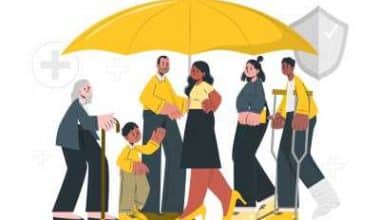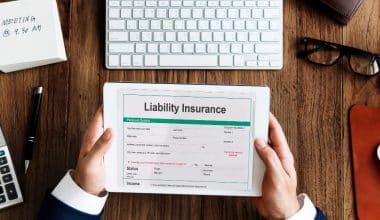Using credit cards regularly can help you establish your credit history while earning incentives and benefits. Overspending and unanticipated financial difficulties could result in a pile of credit card debt. To pay off credit card debt, consider these options.
HIGHLIGHTS- To successfully tackle credit card debt, it is beneficial to formulate and adhere to a well-defined plan initially.
- It is advisable to prioritize the repayment of high-interest-rate cards or cards with the smallest balances.
- Paying more than the monthly minimum reduces the overall interest paid.
- Excess credit card debt can be stressful and prevent you from achieving more significant financial objectives.
How to Pay off Credit Card Debt
You have various options for dealing with your credit card debt. Some may be better than others based on your credit position and budget. Here’s a quick rundown of your options to help you decide which path to take:
#1. Debt Consolidation Loan
A debt consolidation loan is a personal loan used to repay credit card debt. Unlike credit cards, personal loans are installment loans with a defined monthly payment amount and payback plan. Debt consolidation loans can help you get a reduced interest rate while simplifying your repayment procedure by combining many monthly payments.
Personal loans generally have cheaper interest rates than credit cards. However, your credit score and other criteria will determine your rate, so there is no assurance that you will receive a cheaper rate than you currently pay. Moreover, if you have fair or poor credit, you may encounter exorbitant interest rates or need help qualifying for a personal loan. Surprisingly, many lenders will prequalify you before you apply. This approach involves a soft credit check, which does not affect your credit score and allows you to compare loan offers with your present circumstances.
#2. Pay Down Your Debts One by One.
Do you have a credit card balance on more than one? If this is the case, always pay the minimum on each card. Then, pay down the complete sum on one card at a time. You have two options for selecting which card to target:
Concentrate on high-interest debt. Examine the interest rate portion of your statements to determine which credit card has the highest interest rate, and then prioritize paying off that debt.
Attempt the snowball method. The snowball strategy requires you to first pay off the card with the lowest balance. You take the money you were paying for that loan and use it to help pay down the next smallest balance once you’ve repaid it in full.
#3. Transfer Balance Credit Card
If your credit is in good standing, you could also apply for a debt transfer credit card. These cards often have a low or 0% APR for a limited time, with some promotions offering an interest-free term of a year or more. During the promotional period, you pay no interest on the debt transferred from another credit card, though you may be charged a transfer fee of 3% or 5% of the amount transferred.
You can avoid paying interest if you pay off the entire sum by the conclusion of the launch term. Even if you can’t pay it off in full, pay as much as you can each month toward the balance, and you could save hundreds of dollars.
A balance transfer can help you streamline your monthly payments if you have numerous balances.
Read also: 11+ BEST ROTH IRA ACCOUNTS OF 2023
#4. Debt Avalanche Technique
Like the debt snowball strategy, the debt avalanche method requires you to focus on deactivating accounts individually. The fundamental difference is that the avalanche method requires you to prioritize paying off your debts with the highest interest rates.
Unlike the debt snowball strategy, the debt avalanche approach instead yields quick results. For example, if the highest APR card has a significant balance, paying off the first credit card may take a long time. However, removing your most expensive loans first may help you save more money.
#5. Watch How Much You Spend.
Unexpected medical or emergency expenses might cause someone to incur credit card debt. In other instances, persistent overspending is the source of debt, which implies spending more than you’re saving or have in your account. Making a fair budget is the next best step toward debt relief if you want to gain complete insight into how much you’re spending.
#6. Invest More than the Bare Minimum
Examine your credit card bill. Paying off your credit card payment takes much longer if you only pay the minimum sum. You will pay less interest overall if you pay more than the minimum. Your credit card issuer must show this on your account so you can understand how it affects your charge.
Quick hint: Pay a little extra each month. Every dollar over the minimum payment goes toward your balance; the lower your credit, the less interest you pay.
How to Pay off Credit Card Debt With Low Income
Credit cards, when used accordingly, can be beneficial. However, if you are not careful, it can be an expensive method to borrow, especially if it takes a long time to pay off what you owe if you cannot pay the sum.
#1. Analyze Your Finances
Begin by analyzing your finances to determine how much you can pay monthly. Make a budget by detailing your income and spending (without using additional credit) and converting it into a monthly plan you can stick to.
#2. Implement Your Plan
Use this budget to set aside money to pay off your credit cards or, even more, to save for an emergency fund. Transferring this sum to a different bank account may be beneficial.
#3. Put Away Your Credit Card
Stop using your credit card, even if just temporarily. It is far more difficult to repay if the amount owed continues to rise.
#4. Make Sure Your ‘Priority Bills’ Are Paid on Time.
These include council tax and any outstanding fines. If you get behind on them, you may face visits from law enforcement.
#5. Get Debt Assistance
If you need help with what to do, get free debt assistance. Check around to see if you can get help with your budget, get advice on various solutions (including debt consolidation), and set up a repayment plan if that’s your best option.
Credit Card Debt Forgiveness COVID
Since credit card firms anticipate that you will repay the money you borrow, credit card debt forgiveness is rare. However, some choices, such as credit counseling or debt consolidation loans, can help you pay off your debt.
Many federal COVID-19 relief operations have ended three years since the COVID-19 pandemic began in 2023. While there are still some choices for Americans having difficulty paying their expenses due to the pandemic, several federal COVID programs have been phased out.
Surprisingly, when pandemic help dwindled and inflation persisted, credit card debt increased. The growing use of the material is undoubtedly a result of rising prices that harmed the country in ’22. When the pandemic first struck, credit card use fell. This pattern began to shift, and by 2022, credit card use had skyrocketed.
Credit cards are another form of debt that only sometimes offers forgiveness alternatives. Credit card debt forgiveness is improbable since credit card companies expect you to repay the money you borrow, and if you don’t, your debt may end up in collections.
Nevertheless, customers affected by the coronavirus epidemic received financial assistance from some credit card issuers during the pandemic.
Contact your provider and seek financial assistance in writing to take advantage of these relief programs. Be mindful, notwithstanding, as many businesses request that you first check their websites or mobile applications due to longer-than-normal phone wait times.
Here are some of the most typical kinds of support that companies provide; however, they will differ for each company:
#1. Reducing or Postponing your Minimum Monthly Payment
Many credit card providers offer emergency forbearance, enabling you to miss or lower your payments for a short while. Remember to make up any cuts or reduced payments once your forbearance term ends. You won’t be required to make up missed payments right once the forbearance expires, but you will need to continue paying at least the minimum monthly amount, which may have changed.
#2. Refunding or waiving late fees
Your credit card provider will impose a late fee if you miss a payment. But if you ask for financial assistance due to the coronavirus outbreak, many businesses may waive or reimburse late penalties.
#3. Decreasing the Interest Rate
The interest rate on a credit card is the fee you pay to the issuer in exchange for the right to borrow money. If you request it, your credit card provider could lower your interest rates to accommodate the hardship. Remember that the credit card’s interest rate will return to normal after the period.
#4. Setting up a Payment Plan to Pay Off Previous Debts
You could also obtain a repayment plan more suitable for your present circumstances if your hours have decreased and you can only afford to make a fraction of the payment.
Loans to Pay off Credit Card Debt
It depends on how much debt you have on your credit cards, but you can use a debt consolidation loan to pay off your credit card debt. Remember, you will still be required to repay your debt, but you will do it at a single rate to us rather than at numerous rates to various card issuers.
If you are approved for a personal loan with a low-interest rate, you can use it to pay off your credit cards. Before taking out a loan, consider the advantages and disadvantages and several payoff options. One clever step that can assist you in getting out of debt is to apply for a personal loan and use the funds to pay off credit card debt. You should weigh the advantages and disadvantages of this tactic with other possibilities, though.
Many people prioritize paying off credit card debt since credit cards occasionally have higher interest rates. However, if a personal loan is not an option for you or if you want to compare your other possibilities, here are four popular alternatives:
#1. Consider a Debt Repayment Strategy.
Maintain your credit cards, but utilize any extra money to strategically focus on paying off one card at a time. The two prominent strategies are the snowball strategy (paying off the card with the lowest balance first) and the avalanche approach (paying off the card with the highest interest rate first).
#2. Consider a Balance Transfer.
A balance transfer allows you to transfer your debt from one credit card to another. If a card has a balance transfer promotion, the balances you transfer will have a reduced or 0% interest rate for a limited time. Furthermore, you could receive an offer on one of your current cards or apply for a balance transfer credit card with an introductory interest rate for new users.
#3. Pay off Credit Cards With a New Form of Loan.
You could apply for a line of credit or use a secured loan, such as a home equity loan or home equity lines of credit, instead of a personal loan. Although qualifying for big or low-interest secured loans may be more straightforward, be wary of using your house as collateral to pay off unsecured debt.
Tip: Home equity loans and home equity lines of credit (HELOCs) allow you to borrow money using the value of your property as collateral. Still, there are some major variations between them. To begin, HELOCs, like credit cards, provide a spending limit against which you can borrow and repay in varying amounts. In contrast, a home equity loan provides a lump sum repaid in equal, fixed monthly installments.
#4. Set up a Debt Management Strategy.
Nonprofit credit counseling groups can assist you in developing a debt management strategy to pay off your credit cards. A credit counselor can negotiate fee exemptions and reduced interest rates to help you save money, and the plans typically result in debt repayment within three to five years. However, you may be unable to use or open credit cards during that period.
What Is the Correct Way to Pay Off a Credit Card?
Paying off your credit card bill in full each month is a great way to save money and improve your credit. Aim to pay your bill in full each month, or as soon as possible, for the best benefits.
How do I Pay Off My $10,000 Credit Card Debt?
How to Get Rid of $10,000 in Credit Card Debt
- Maintain a strict budget.
- Select a payment strategy.
- Consider consolidation.
- Use a balance transfer or personal loan.
- Look for ways to increase your income.
- Seek professional help.
- Monitor your progress.
- Negotiate with your credit card company.
Should I Pay Off My Credit Card in Full or Leave a Small Balance?
When you can, pay off your credit card bill in full. Carrying a monthly credit card balance can cost you money in interest and raise your credit usage rate, which is one of the factors used to determine your credit ratings.
What Is the 15-3 Rule?
You can reduce your balances and reflect a lower credit usage percentage before your billing cycle finishes by making a credit card payment 15 days before your payment due date—and again three days before. This information is then forwarded to credit bureaus.
To put it differently, the 15/3 credit card payment rule is a technique that entails making two payments to your credit card company each month. You make one payment 15 days before your statement’s due date and another three days before.
Do Credit Card Companies Like When You Pay in Full?
Yes!
Indeed, credit card companies appreciate it when you pay off your balance in full each month. In fact, they regard it as an indication of trustworthiness and active credit card use. Carrying a balance from month to month adds to your debt through interest costs and might harm your credit score if it exceeds 30% of your credit limit.
What Is a Healthy Amount of Credit Card Debt?
Generally, your minimum credit card payments should never exceed 10% of your net income. Your net income is the money you take home after taxes and other deductions. You use net income for this ratio because that is the money you spend on bills and other expenses.
Conclusion
The prospect of paying off your credit card debt might be overwhelming, regardless of the amount you owe. Nonetheless, the sooner you take the first step toward your objective, the easier and faster you will reach it. Remember that your strategy may evolve as your financial situation changes. Be willing to examine your plan frequently and make changes as needed. Credit card debt repayment can take months or even years, but the work is well worth it.
- 8 Best Insurance Providers For Small Business 2023
- Types of Business Insurance: What Coverage Does Your Business Need?
- Business Insurance for Consultants: What It Is & How Much It Costs
- Business Insurance For LLC: What It Is & Best Options






